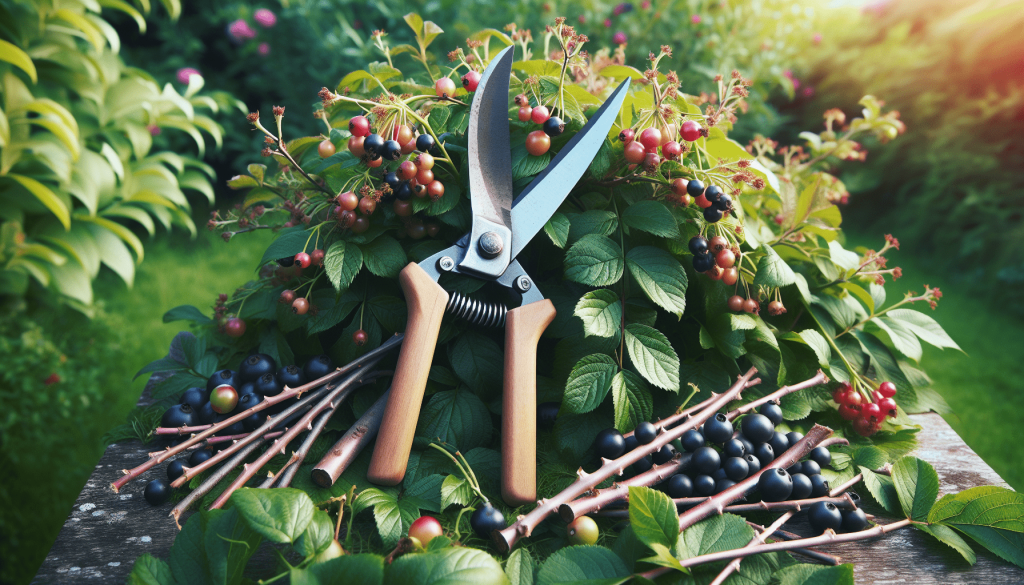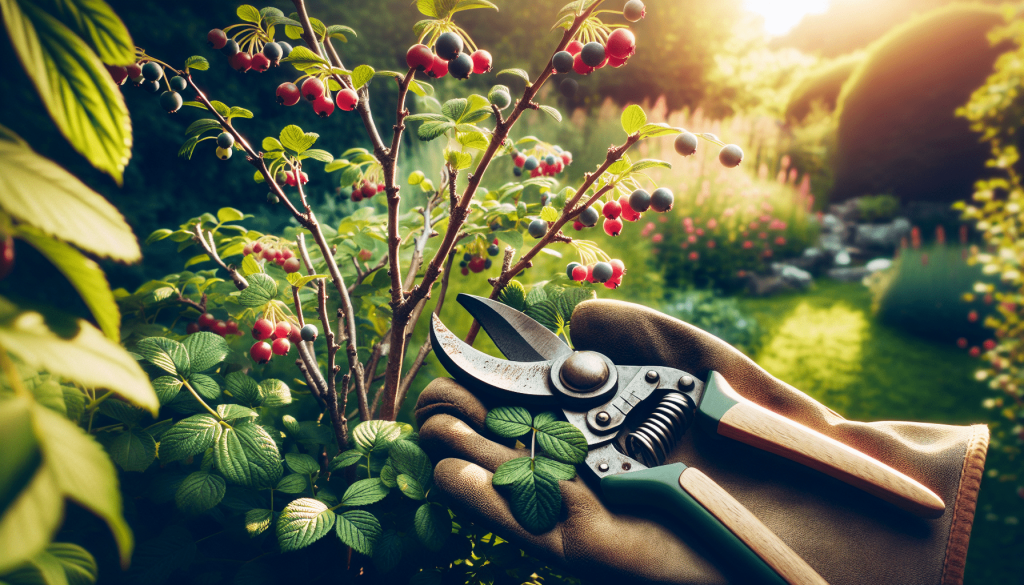This post may contain affiliate links. As an Amazon Associate, we may earn commissions from qualifying purchases.
Have you ever found yourself wondering how to get that perfectly lush and fruit-laden berry bush in your garden? If so, you’re not alone. Cultivating healthy berry bushes involves more than just watering and fertilizing. An essential, yet often overlooked, aspect of berry bush care is proper pruning.
Why Prune Berry Bushes?
Pruning might sound like garden cruelty, but it’s actually quite beneficial—think of it as giving your plant a refreshing haircut. Pruning helps improve air circulation, encourages vigorous growth, and maximizes fruit production. Not to mention, it aids in maintaining the plant’s shape and health over time.
When to Prune Berry Bushes
Timing is crucial when it comes to pruning. Pruning at the wrong time can negatively affect your bush’s fruit production and overall health. Here’s a quick rundown on when to prune different types of berry bushes:
| Berry Type | Optimal Pruning Time |
|---|---|
| Blueberries | Late Winter to Early Spring |
| Raspberries | After Harvest (Summer) |
| Blackberries | Late Winter or Early Spring |
| Gooseberries | Winter or Early Spring |
| Currants | Winter |
Understanding the best time to prune your specific berry bushes can greatly increase their health and yield.

Tools You’ll Need
Before you transform into a master pruner, arm yourself with the right tools. Here are the essentials:
- Hand Pruners: For small branches and stems.
- Loppers: Ideal for thicker branches between 1-2 inches in diameter.
- Pruning Saw: For very thick branches and old wood.
- Gloves: To protect your hands from thorns and potential scratches.
- Disinfectant: To clean tools between uses to prevent disease spread.
Pruning Blueberries
Blueberry bushes will thank you for judicious pruning, rewarding you with bountiful fruit. Here’s how you can prune your blueberry bushes for optimal growth:
Step-by-Step Guide
- Identify the Canes: Blueberry bushes have canes of different ages. Identify and remove any canes that are over six years old, as they become less productive.
- Remove Dead or Diseased Wood: Cut out any dead or diseased branches to prevent the spread of infections.
- Thin Out Crowded Canes: Eliminate canes that are growing inward or are too close to other canes. This improves air circulation and light penetration.
- Shape the Bush: Aim for a vase shape with an open center. This allows light to reach the inner canes, encouraging more fruit production.

Pruning Raspberries
Raspberries can be divided into two main types: summer-bearing and everbearing. Each type requires different pruning strategies.
Summer-Bearing Raspberries
Summer-bearing raspberries produce fruit on second-year canes. Here’s how to prune them:
- After Harvest: Cut down all the canes that produced fruit this year right after the harvest.
- Thinning New Canes: Thin out new canes, leaving only the strongest ones spaced about 6 inches apart.
- Remove Weak Canes: Get rid of any weak, small canes as these are unlikely to produce substantial fruit.
Everbearing Raspberries
Everbearing raspberries can produce fruit twice a year, once in summer and again in fall. Here are the pruning steps:
- After Fall Harvest: Cut back all the canes to the ground.
- Spring Maintenance: In early spring, thin new shoots, keeping the healthiest and most robust ones.
Pruning Blackberries
Pruning blackberries can improve both the yield and ease of harvesting. Blackberries produce fruit on second-year canes, similar to summer-bearing raspberries.
- Post-Harvest: Cut out all the canes that have fruited this year.
- Thinning New Canes: In early spring, thin new canes to about 8 inches apart.
- Shorten Canes: Tip prune (cut back the top) to stimulate lateral shoot growth, which will bear the fruit.
Pruning Gooseberries and Currants
Gooseberries and currants are a bit more forgiving, but they still benefit from regular pruning. Here’s how you can keep them in top shape:
- Late Dormant Season: Prune these bushes in the winter when they are dormant.
- Remove Old Wood: Get rid of any wood older than three years as it becomes less productive.
- Open Up the Center: Aim to create an open center to allow for better air circulation and light penetration.
Common Pruning Mistakes
We all make mistakes, and that’s okay. Here are some common pruning mistakes to avoid:
- Pruning at the Wrong Time: Timing is everything. Pruning at the wrong time can reduce your fruit yield.
- Over-Pruning: Cutting too much can stress the plant and reduce its ability to produce fruit.
- Poor Tool Maintenance: Dirty or dull tools can introduce diseases and cause ragged cuts that harm your plants.
- Ignoring Diseased Canes: Always remove diseased canes as soon as you see them to prevent spreading.
Tips for Year-Round Care
Proper pruning is essential, but don’t forget these additional care tips to keep your berry bushes healthy all year round:
- Mulching: Apply a layer of mulch around the base of your bushes to retain moisture and suppress weeds.
- Watering: Ensure your berry bushes get enough water, especially during dry spells.
- Feeding: Use a balanced, berry-specific fertilizer to provide essential nutrients.
- Pest Control: Keep an eye out for pests and treat them promptly to protect your plants.
Frequently Asked Questions (FAQs) About Pruning Berry Bushes
Still have questions? Here are some common FAQs:
Q: Can I prune my berry bushes in the summer?
A: It’s generally advised to prune in late winter or early spring, but light pruning can be done in the summer, especially for removing dead or diseased wood.
Q: Do I need to disinfect my pruning tools really?
A: Absolutely! Disinfecting tools can prevent the spread of diseases from one plant to another. A simple solution of bleach and water works well.
Q: My bush looks like a mess of twigs. How do I start?
A: Start by removing the dead, diseased, or damaged wood. Then, thin out the crowded or crossing branches.
Getting Your Garden Ready for The Next Season
So now you have the knowledge and tools to prune your berry bushes like a pro. Get into your garden, and start snipping away for a fruitful next season. Remember, pruning isn’t a one-and-done task. Regular maintenance will ensure your berry bushes stay healthy and productive year after year.
Cultivate those bushes with care, and you’ll reap the sweet rewards—both in berries and the joy of a flourishing garden. And isn’t that the real goal? To find a bit of happiness and perhaps some tranquility amongst the brambles of our busy lives? In truth, pruning is a bit like life itself. Cut away the old, make room for the new, and always be willing to grow.








